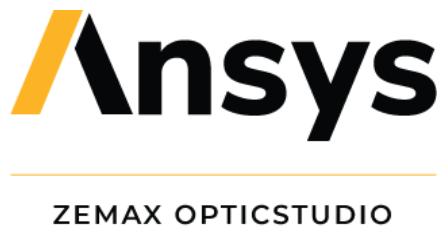
2022 R2 Release Notes
July 7th, 2022
1 Welcome to Ansys Zemax OpticStudio
1.1 Set up your system
OpticStudio’s intuitive user interface includes easy-to-learn tools and wizards which enable efficient simulation and design of any optical system, from those made up of traditional spherical lenses to those containing the most complex freeform and non-rotationally symmetric components. Design high-confidence virtual prototypes with the only optical design software that can model everything from imaging optics to illumination, including diffractive systems composed of Surface Relief and Volume Holographic gratings.
1.2 Analyze your system to evaluate performance
OpticStudio includes a suite of optical engineering tools to analyze the performance of your system. In addition to the classic analysis functions, OpticStudio also offers Full-field Aberration analysis to improve freeform designs, straylight analysis to investigate Ghost Images and Flare, contrast analysis for MTF optimization, and Image Simulation to produce photorealistic images of object scenes.
1.3 Optimize your system to meet manufacturing specifications
State-of-the-art optimization tools can be used to automatically improve the performance of optical designs based on user-defined constraints and design goals. This saves time by eliminating design iterations. Optimize for MTF up to 10x faster with our innovative and award-winning Contrast Optimization - which removes multiple design and test steps inherent in older processes.
1.4 Final tolerance analysis to ensure manufacturability
For years, the Monte Carlo tolerance analysis in OpticStudio has been the gold standard for simulating how designs perform in the real world. More optical research papers rely on OpticStudio to accurately simulate their designs than any other optical software. With OpticStudio, optical engineers are confident that their systems will meet the real-world performance demands of their customers. Furthermore, with Quick Yield you can dynamically determine how tolerancing will impact the as-built performance of your system throughout the design process.
1.5 Customize OpticStudio to suit your needs
With the ZOS-API, you can create standalone applications, build your own analyses, and control OpticStudio externally using C#, C++, MATLAB, Mathematica, and Python. The Zemax Programming Language (ZPL) enables you to write your own macros to automate repetitive processes. Custom DLLs allow creation of any surfaces, objects, sources, and scatter functions.
1.6 Get fast, accurate STOP results from FEA data (Enterprise Only)
Analyze the impact of structural and thermal loads on your optical designs with the Structural, Thermal, Analysis and Results (STAR) functionality available in the Enterprise edition of Ansys Zemax OpticStudio. This functionality extends OpticStudio’s capabilities to include structural, thermal, and optical performance (STOP) analysis based on finite element analysis (FEA) data sets. Reduce human error and wasted time spent recreating designs by blending and optimizing STOP and OpticStudio design processes into an integrated workflow.
2 Tools, Features, and Capabilities
2.1 License Utility (All Tiers)
Set up and manage your Ansys Zemax licenses.
When launching OpticStudio for the first time, the License Utility will automatically open if there are no licenses found. Otherwise, the License Utility button can be found in the Information section of the Help tab.

With the License Utility, you can configure access to a local license installed on your machine or a network license server. You can also select whether to use a Pro, Premium or Enterprise license first when starting OpticStudio. Once you’re happy with the configuration, click OK and restart OpticStudio to apply the changes.

For additional information or help, click on the “Licensing Help” button in the License Utility. This will take you to the Zemax support website with additional information. You can also access the resources directly with the following links:
Please note: Ansys Zemax OpticStudio only works with Ansys licenses. If you are trying to access a Zemax license, i.e. licenses in the format L1XXXXX or any USB license, you will need to install the Zemax version of OpticStudio.



